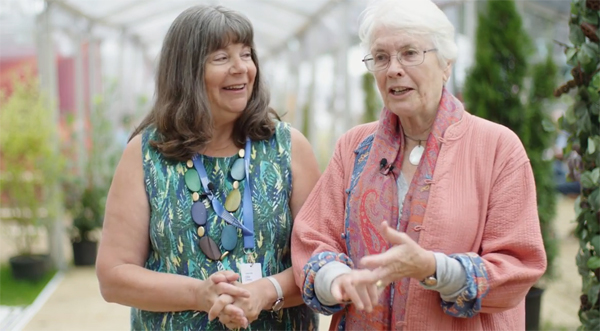This resource is great for:
Being inspired to get outdoors and into nature and to then start writing about it!
Summary:
Watch a video interview with authors Julia Green and Elizabeth Laird to find out how nature inspires their writing. Then get out into nature yourself by using our activity suggestions.
Download this resource:
Get into Nature with Julia Green & Elizabeth Laird – PDF version
Get into Nature with Julia Green & Elizabeth Laird – Word doc
Introduction
The video below forms part of a series of interviews carried out by our Year of Young People young programmers with the wonderful authors they chose for their 2018 strand of events at the Book Festival, which explored the theme of Freedom in all its different forms.
Julia Green’s To The Edge of the World is a beautiful story of courage and friendship set on a remote Scottish island, while Elizabeth Laird’s Song of the Dolphin Boy is a moving adventure story about the importance of looking after our oceans.
Watch the interview to find out why nature and the environment are so important to these authors and their writing, then get your own ideas flowing with our activities inspired by the natural world.
Activities
Part One – Get Outside!
Julia and Liz agree that the most important thing to do if you want to write a story set in nature is to get outside into nature!
Find some green space near your school. This could be anywhere from a nature reserve to a park, or simply a wooded or grassy path or playground. Remember to take a notepad and something to write with.
Find a quiet space by yourself. Sit down on the ground and take five deep breaths. Try to clear everything apart from your mind so that you can focus solely on your surroundings.
Close your eyes and listen carefully. What can you hear?
Keep your eyes closed and take a deep breath through your nose. What can you smell?
Keep your eyes closed and focus on what you can feel. Is there sun or wind on your face? What can you feel beneath your legs and bottom?
Open your eyes. What can you see?
In your notepad, finish these short sentences:
- Sitting in the…
- I can hear…
- I can smell…
- I can feel…
- I can see…
- It makes me feel…
Now change your position so that you can get really up close with nature. Put your face really close to a tree trunk, the grass or another plant. Now what can you see? Do the plants look different up close? Can you see any insects? Again, take five breaths and try to just focus on your surroundings.
Complete the sentence below but write as much as you can. It doesn’t matter what language you use or if it makes sense. Just get your response down on paper.
- I can see…
Part Two – Caring for the Environment
In the interview, Julia and Elizabeth also talk about how important it is to live in a way which is thoughtful to the environment, for example to cut down on our use of plastic.
Why not brainstorm ideas which could help your class live in a way which is better for the environment, both in school and at home. Which ideas can you put into practise?
There are lots of ideas to get you started in out ‘It’s Easy Being Green’ learning resource: https://learning.edbookfest.co.uk/resources/its-easy-being-green/
Part Three – Get Involved
Elizabeth tells us that environmental charities often organise campaigns which people can get involved in. Look up some environmental charities online, see what work they’re doing, and see if there’s any way you can get involved.
The Young People’s Trust for the Environment might be a good place to start: https://ypte.org.uk/
Some other useful links are:
https://www.greenpeace.org.uk/
https://www.woodlandtrust.org.uk/
Further information:
You can find out more about our young programmers and the events they programmed as part of their 2018 strand here: https://learning.edbookfest.co.uk/news/year-of-young-people-meet-our-young-programmers/
